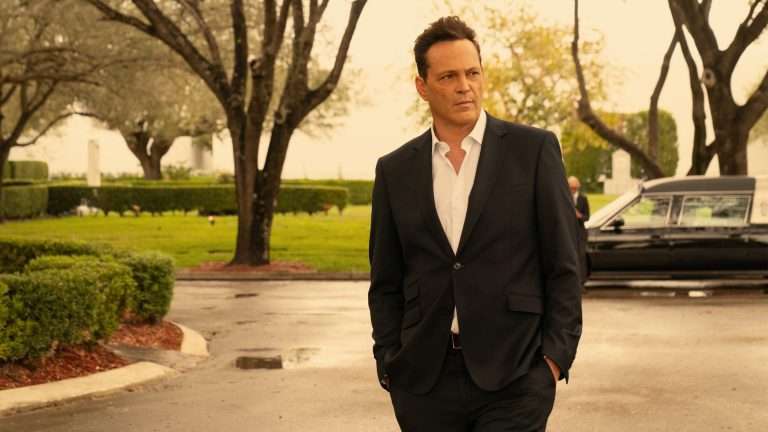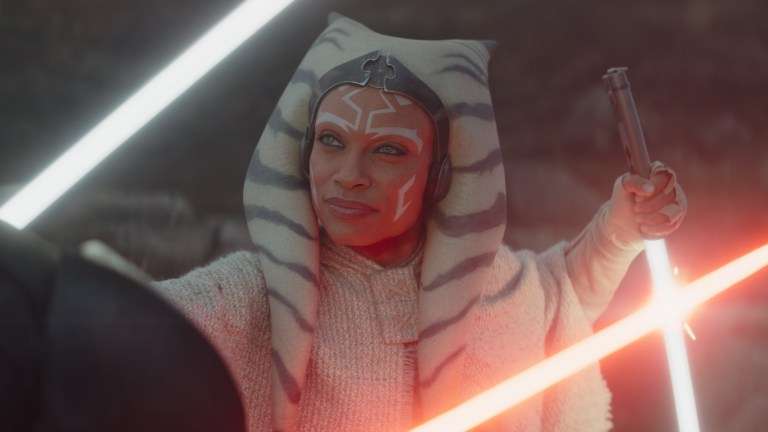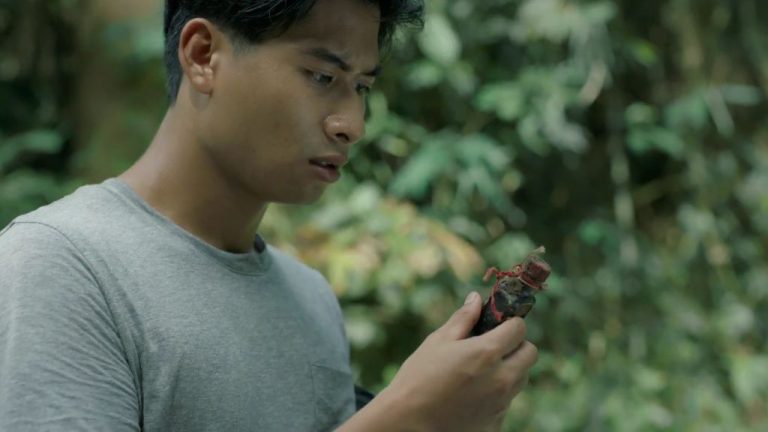Created by Mattson Tomlin (“Project Power,” “The Batman“) and directed by Masashi Kudo (“Bleach,” “Tower of God”), under the animation auspices of Production IG (“Ghost in the Shell,” “Psycho-Pass”), “Terminator Zero” if nothing has impressive bona fide. Non-cynics would have you believe it’s a match made in heaven, though considering this is a franchise that had James Cameron involved in at least two of the unremarkable sequels, that hyperbole falls apart quite quickly. However, considering this is an anime, a medium historically famous for being densely packed even at a 30-minute runtime, there is a possibility that the show can provide an exciting plot and, more importantly, an interesting set of characters.
Terminator Zero (Season 1) Recap:
The events of “Terminator Zero” would seemingly run parallel to those of the first two films, with even remixes of the familiar formula.
2022 – Eiko’s Timeline
As the first episode opens in the future year 2022, we witness Eiko (Sonoya Mizuno) escaping and trying to battle a Terminator (Timothy Olyphant). Their skirmish finally ends with Eiko using a device to siphon off the Terminator’s energy source, shutting it off (or so it would seem). At the resistance bunker, we witness Eiko returning with the energy source, which serves as the data for the Resistance to identify Skynet’s plan to stop this war.
As in every “Terminator” film, the plan is to send a Terminator back to the past. The resistance mirrors the coordinates of Skynet’s time machine, where we also witness a new Terminator being formed. As per protocol, the Terminator climbs up the platform of the time machine buck-naked to be sent off to the year 1997.
Eiko, too, climbs up on their makeshift time machine. But as she is sent back in the timeline, the resistance bunker is attacked by the same Terminator she had apparently killed a couple of hours ago. The last she witnesses of her time, her sister, and the rest of the survivors of the resistance being gunned down before she is transported to 1997 Tokyo.
The tragedy is twofold because she takes the journey knowing full well that the past she is traveling to is not her past. According to the prophet (Ann Dowd), every time Skynet sends a Terminator back to the past, it changes the future by creating a branched timeline. And while Eiko follows in the proud footsteps of Kyle Reese, the resistance soldier sent back in the past to kill the Terminator, her job is not to stop Skynet, but as it turns out, it is to stop KOKORO.
1997 – August 29 – Pre-Judgement Day
Most of “Terminator Zero” takes place in Japan in the 1990s. We follow Malcolm Lee (Andre Holland), a robotics engineer who mysteriously knows the details of Judgement Day and has inclinations to stop it. His dreams about the world ending further drive him headlong into creating his AI, which is housed in the central building of the Cybernetics Company Cortex.
Lee has utilized Cortex’s resources to develop an advanced AI named KOKORO (heart, body, and mind), personified by three holograms of differently colored female characters interacting with Malcolm in the nether space of the central housing that would house the AI. Lee’s obsession with bringing Kokoro online is further muddled as Judgement Day nears.
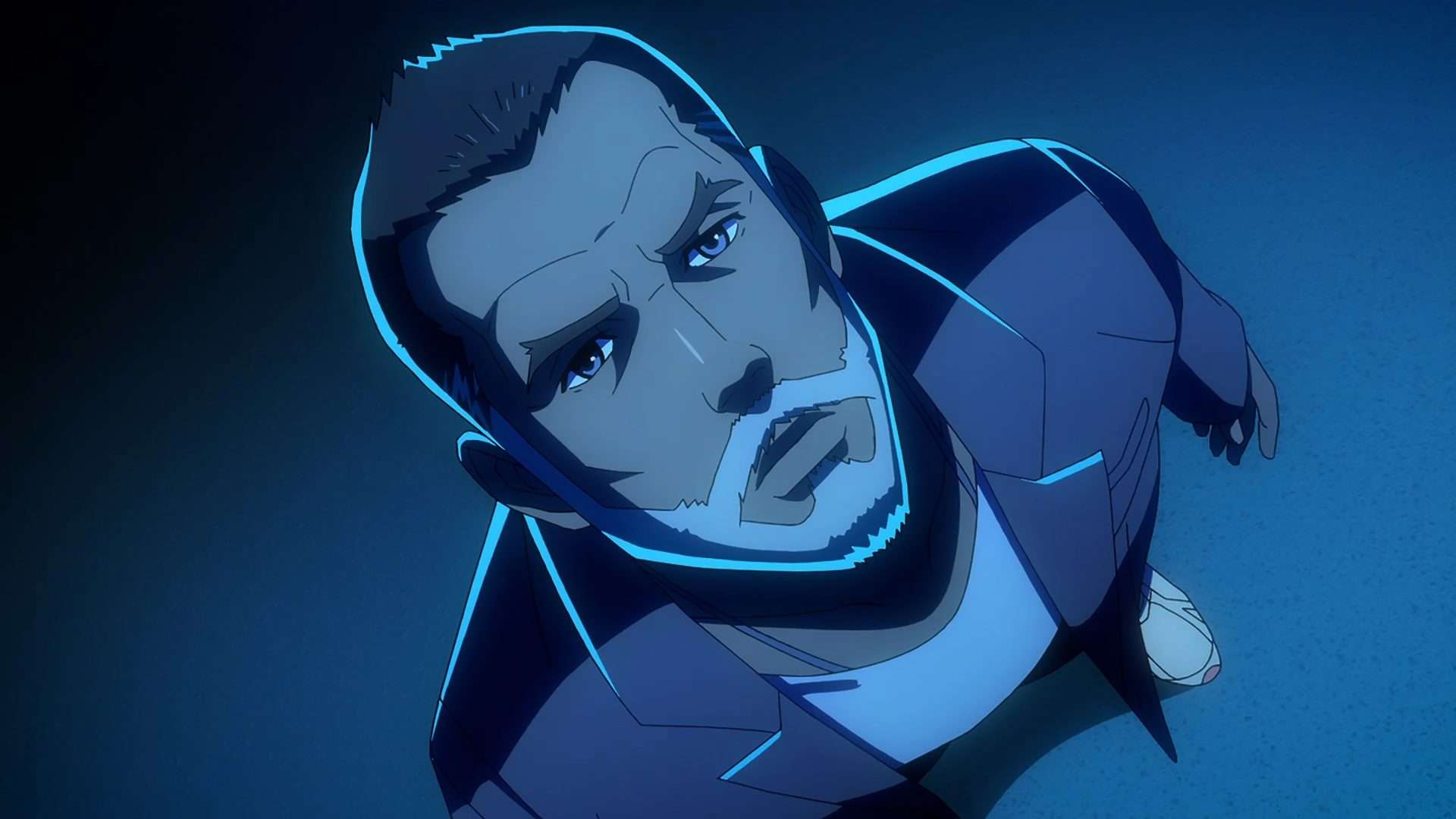
What we know about Judgement Day as per the events of “Terminator 2: Judgement Day” (before the film ends) is that on August 29, 1997, Skynet (the AI created by Cyberdyne Systems based out of the United States of America) would gain sentience, deem humanity a threat once it gains access to all the systems and the database, and launch an all-out nuclear attack against Russia to provoke a counter-attack. This would result in an all-out attack and a wiping out of almost 80% of the Human population.
The significant events of “Terminator Zero” take place a couple of hours before Judgement Day. While Malcolm Lee leaves for Cortex and KOKORO, he leaves his three children—Kenta, Hiro, and Reika—under the stewardship of their mysterious housekeeper, Misaki (Sumalee Montano). The children have distinctive character traits. Kenta is more scientific, logic-obsessed, and tinkers with machines.
Hiro is the happy-go-lucky kid, while Reika is the most sensitive of the lot, with the loss of their mother inciting a mini-revolt on Reika’s part. Realizing that she would have to part with the robot cat Koneko (who had been gifted by Misaki) as per her father’s wishes, Reika escapes. Her brothers, too, go out on an adventure to bring her home.
Preoccupied by a minor accident, Misaki panics and calls up Malcolm, who leaves the Koroko room to follow them. On the way, they are attacked by the Terminator, who is sent to kill Malcolm. They barely survive because Eiko drives a truck through the Terminator. In the commotion, Malcolm orders Misaki to protect his children because if the Terminator hadn’t been able to get Malcolm inside Cortex, the logical next step would be to go after their children.
Misaki’s odyssey would have a reluctant companion in Eiko, who is wounded and slightly suspicious of Misaki. But they soon manage to locate the children in the abandoned amusement park that had been their mother’s favorite. Not a moment too soon, the Terminator, disguised under the guise of an ordinary man, breaks into the Lee household and manages to track the robotic cat by searching through its database and its unique barcode.
As the Terminator would begin to attack and almost kill the kids, he would be stopped in its tracks by Hiro, who wouldn’t resort to guns, similar to the Terminator. It’s a fascinating wrinkle as Japanese society as a whole wouldn’t favor guns during the 90s, except for authority figures like the police. Thus, the Terminator would battle with a crossbow loaded under its arm, while Eiko would battle with bottles of acid that would eat through the living tissues.
While Eiko would escape with Reika in a police vehicle, Misaki, accompanied by Kenta and Hiro, would take the help of the police. In the first case, it would result in a car chase of Eiko being chased by a cadre of police officers, with her finally hiding out in an office building and urging Reika to call her father. Her father, though, wouldn’t pick the phone up, rationalizing that Reika would have to solve this issue on her own.
Meanwhile, at the police station, Misaki being questioned would reveal a completely blank slate regarding her past, vague statements, and inability to recall anything about her past. However, she is unintentionally saved from further embarrassment by the appearance of The Terminator, having not perished after being pushed down an elevator shaft by Eiko. The Terminator had dressed up in the guise of motorcycle police and managed to mow down almost all the officers. In that bloody commotion, the Terminator tears Misaki’s arm off, revealing her android arm, with wires coming out of the end of the bloody stump.
Meanwhile, Eiko is caught by the police after being unable to patch Malcolm Lee’s direct line because the police force cut the phone lines off. Both she and Reika would be transported to the hospital, while Misaki, Hiro, and Kenta would escape from the police station when Judgement Day occurs.
1997 – August 29 – Post Judgement Day – the Deviation
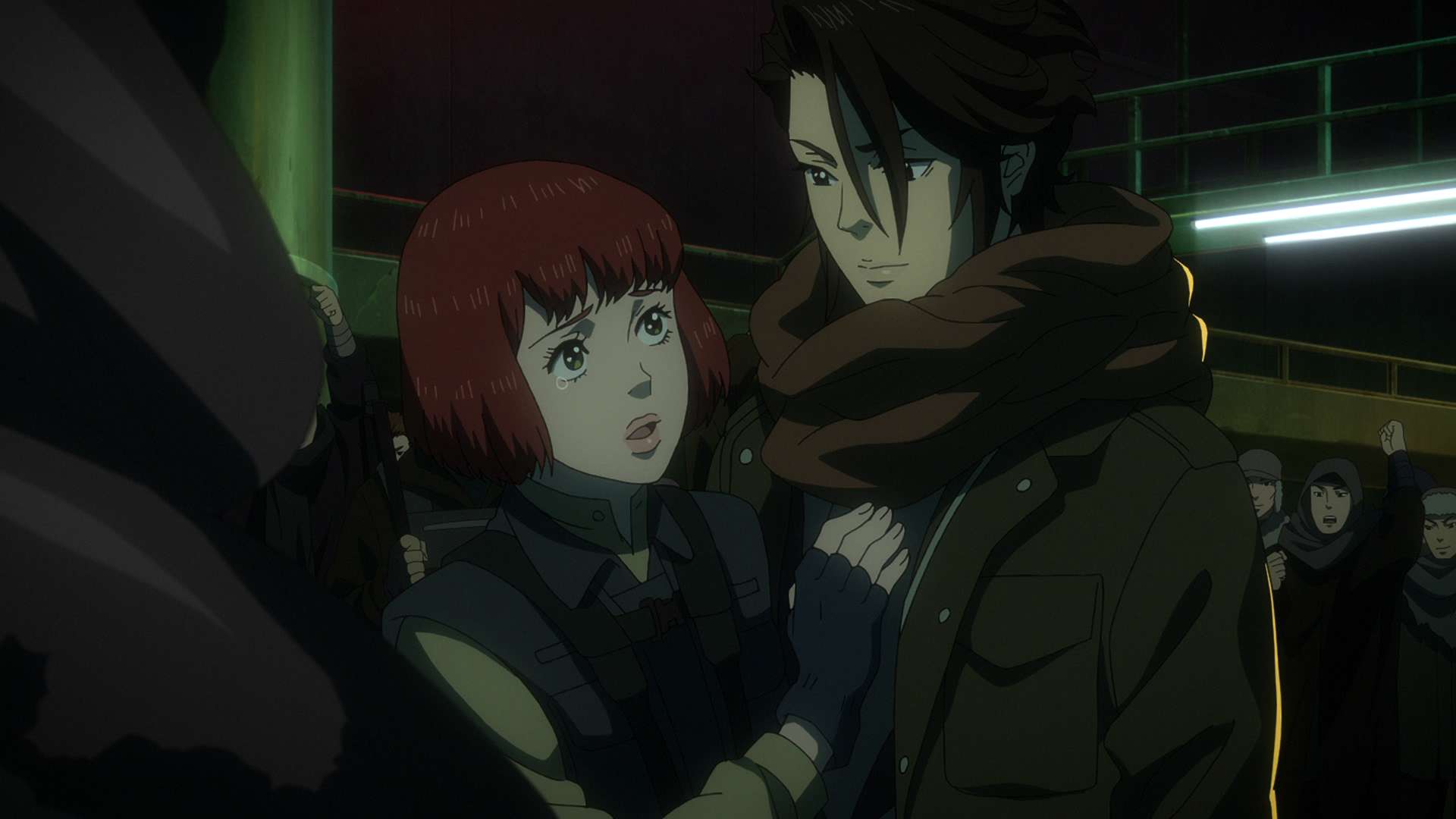
Here’s where the branching of “Terminator Zero” begins to make more sense from the perspective of the central timeline. Unlike the ending of “T2: Judgement Day,” where the attack on Cyberdyne Systems would delay Judgement Day, “Terminator Zero” shows Judgement Day occurring uninterrupted as Skynet comes online.
Malcolm Lee’s entire plan hinges on KOKORO being developed as a counter to Skynet to rival it and save the earth from total annihilation. However, he also fears that once KOKORO comes online, it will ally itself with Skynet or at least share a similar apathy regarding humanity and take action against it. Thus, the entire show hinges on KOKORO’s conviction of humanity and its survival.
And while KOKORO manages to intercept some of the nuclear missiles launched by Skynet, stopping Tokyo from being attacked by nuclear missiles again, the implications are terrifying, especially in the context of a country that had been historically the subject of nuclear fallout from another rival nation. But KOKORO also takes control of the Cortex industries’ launched robot assistants named INNO, which have been released nationwide. The INNOs are controlled via a hive mind. Thus, KOKORO takes control of all the INNOs and regains control of the city, literally producing a dystopian law where the INNOs form the frontline against humanity in this ‘97 dystopian Japan.
The events lead Eiko to a meltdown, and she reveals to Reika that in her future, KOKORO and Skynet are both active and are rival AIs with the sole intention of controlling the world. Her mission had been to track down Malcolm Lee and convince him not to take KOKORO active, while The Terminator’s mission had been to infiltrate the Cortex and shut down KOKORO.
Kenta and Hiro, meanwhile, react very differently to the revelation of Misaki being an android. Hiro overlooks her identity as an android and still believes in her. At the same time, Kenta would look at her with distrust as one of “them,” especially considering the INNOs are now working as an opposing force to humanity. However, Hiro convinces him that maybe their father built Misaki for their protection, and thus, maybe Kenta should trust their father. Kenta temporarily believes that statement and uses the hands of one of the discarded INNOs to connect and build a new hand for Misaki.
His trust in Misaki is severely tested, however, when she comes across a seemingly abandoned house with an INNO used as a warning scarecrow to scare the INNOs away. The discarded appearance of the INNO triggers something in her, and she tries to free the INNO from its misery, only for it to explode in her face. The humans, meanwhile, look in horror as Misaki gets up, a few burns revealing the metallic shell underneath the tissue.
That scares the humans, who begin attacking her, and then her protective measures kick in. Misaki transforms into a terrifying cyborg, brutally slaughtering them with no hints of recognition. Her switch turns off when she sees Hiro held at gunpoint by one of the humans threatening him but is shot in the back by Kenta. However, this event scars Kenta, who finds himself unable to trust Misaki and even hesitates lowering his gun, only stopping once Hiro tackles him and reminds him that Misaki is the only one in this whole world who cares for them, not their dad.
The two teams—Eiko and Keira and Kenta and Hiro with Misaki—all travel to the amusement park, followed unknowingly by the Terminator. The Terminator uses one of the heads of the INNO and attaches it to its arm to send a signal, camouflaging itself as a non-threat to the INNOs. While in the amusement park, Kenta is kidnapped by the Terminator to leverage it to convince Malcolm to shut KOKORO down.
How is Malcolm knowledgeable about Judgement Day?
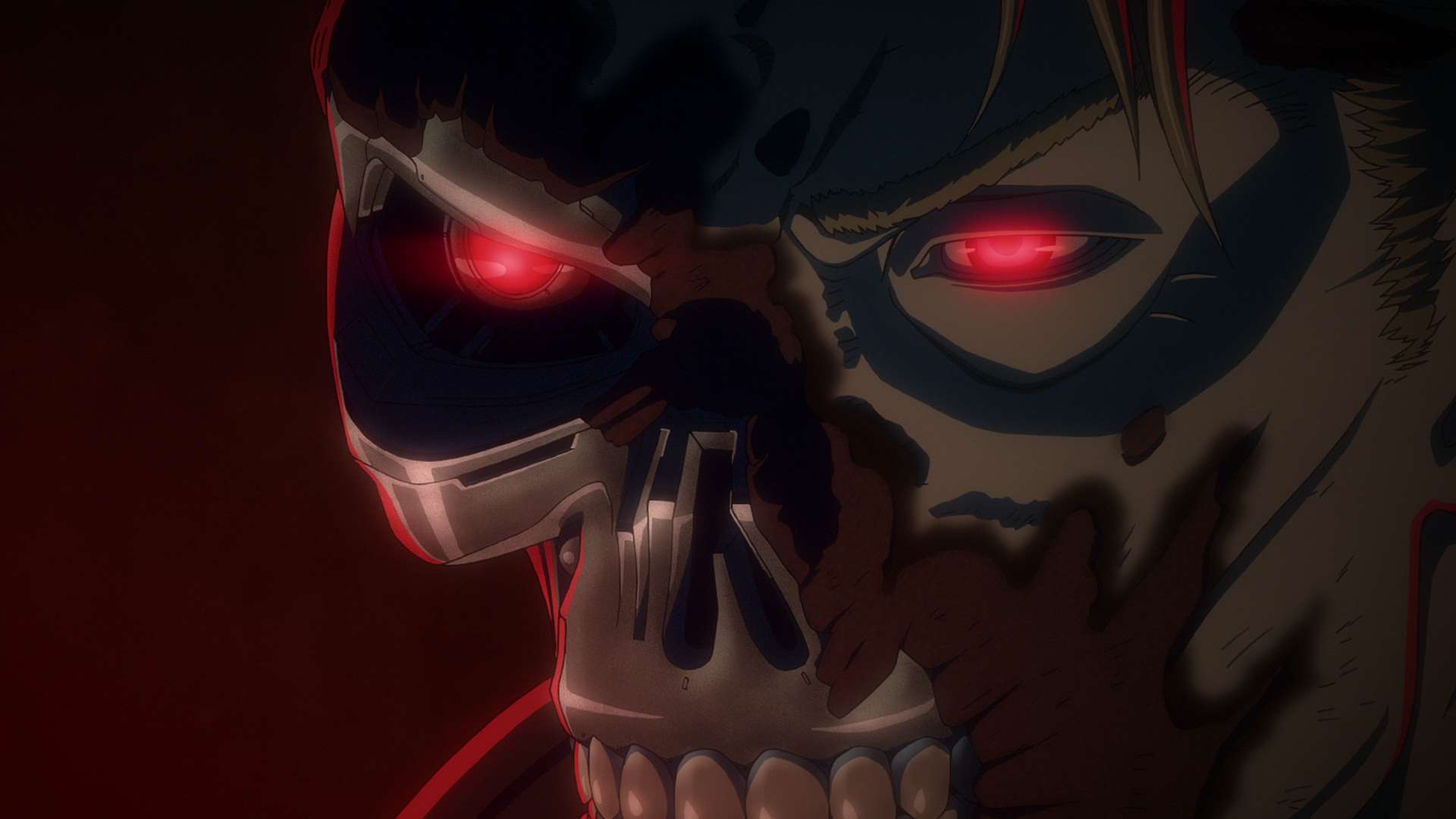
Throughout the show’s runtime, we witness scenes and stray dialogue from both Malcolm and Keira that hint at Malcolm knowing Judgement Day, Skynet, and the Terminators far more intimately. The show’s portrayal of a relatively advanced period in 1997 also hints at Corex Industries, under Malcolm’s leadership, having managed to shift Japan somewhat exponentially from a technological standpoint.
However, the central question of how Malcolm was able to build an AI to rival Skynet is finally revealed in the seventh episode of the season. There, we learn that Malcolm is from the future. He had been born in the dystopian war-torm world of 2025, in the middle of a war. When he was six years old, he would already be dubbed a specialist in building explosives that would be successful in killing terminators.
But by the time in 2037, when he was 17 years old, he would understand that the road being taken—to change the directives of the Terminators and send them back in time—wouldn’t lead to any wars being stopped. If he had to stop the wars, he would have to uproot it from the source. For Malcolm, that uprootment entailed introducing free will and a sense of conscience within the AIs. And to that event, he would first create what is essentially the KOKORO 0.0, or Misaki, in 2045.
Misaki would herself choose the female gender as her default appearance and voice cadence because, according to her, women are the nurturers of life or creators. She would name herself Misaki because she believes herself to be an emissary, and through her and Malcolm’s co-attempts, she would create the God that would be formed in the future. In that regard, she implicitly believed, they would be able to paper some of the flaws of the creators that Skynet had inherited.
However, Malcolm is stopped by the leader of his faction of the resistance and threatens to have Misaki unplugged, which leads to Malcolm killing the resistance leader and his cronies. They later built the time machine in secret, and then Misaki and Malcolm traveled back in time to 1983 in Japan. Once they reached that timeline, they strategized and began the step-by-step process of building a new life and replicating the equipment through access and position at Cortex Industries. But Malcolm wouldn’t be able to escape fate—falling in love and starting a family—and her loss, too, would be a cruel joke of fate.
Malcolm and Misaki have built KOKORO for years, but once they are finally ready to launch, Misaki gifts her CPU to Malcolm as the source code for Kokoro’s launch. This results in the birth of KOKORO and the rebirth of Misaki into the meek servant that we witnessed at the beginning of the season, displaying character traits and a protective streak for Malcolm’s children that might have been programmed by Malcolm but executed efficiently and terrifyingly by Misaki.
Terminator Zero (Season 1) Ending Explained:
What was the Terminator’s true intention?
The Terminator’s initial plan would be to use Kenta as leverage to gain access to Coretx Industries and shut down Kokoro by threatening Malcolm. A curveball occurs when Kokoro reveals herself as always watching through the INNOs and inviting the Terminator and Kenta to the office. But Malcolm refuses as the Terminator threatens to kill Kenta if he doesn’t open the door to the chamber housing KOKORO. The Terminator then proceeds to hurt Kenta’s arm, threatening to make him suffer, which finally leads to Malcolm opening the door and sternly informing the Terminator that whatever he does cannot change anything. It’s too late, as KOKORO is already online.
Upon hearing that, the Terminator begins to update its mission parameters, only to be attacked by Eiko and Misaki. In the ensuing battle, Malcolm reveals that the Terminator is now going after the EMP to shut down Kokoro, to which Eiko reassures him that she will deal with it while he should shut down Kokoro.
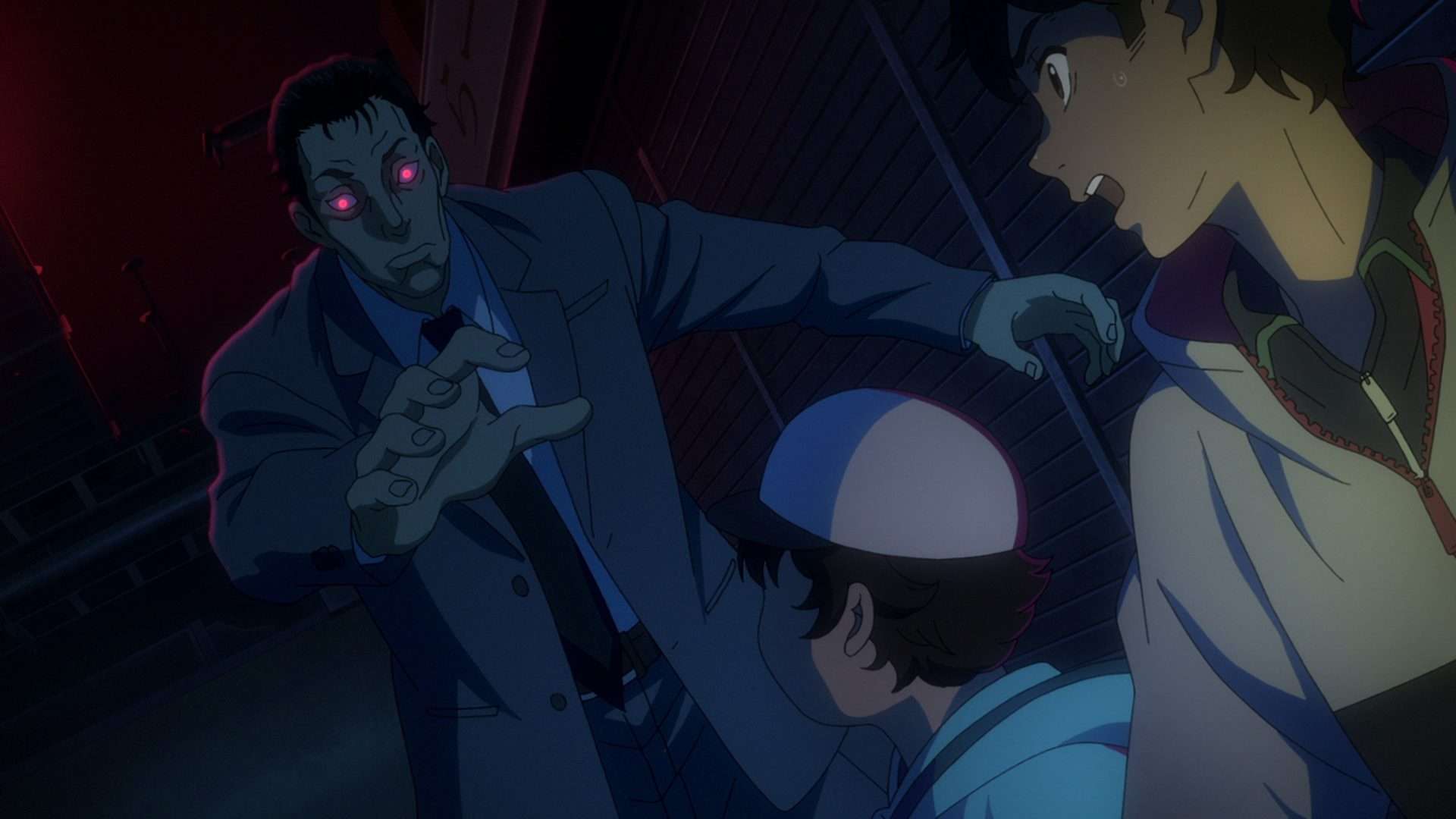
Of course, that is not Malcolm’s intention. Malcolm had discreetly planned this entire event to make the case for humanity to Kokoro, such that Kokoro would decide to favor humanity against Skynet. In the ensuing battle against the Terminator in the server room, the Terminator surprisingly rescues Kenta from being killed by debris, breaks Eiko’s hands, and finally kills Malcolm before taking Kenta to the EMP room.
It’s in that EMP room that the Terminator reveals his true intention. While his mission is to flip the EMP and shut down KOKORO, he can’t do it himself, as that would mean he would be shut down. He wants Kenta to do it, as Kenta’s future self had been the one to send this Terminator back in time. In that future, Kenta brokered a peace treaty between humans and Skynet and would send the Terminator back in time to shut down KOKORO so that, in the future, peace exists.
How does Malcolm’s death convince KOKORO?
Malcolm’s sacrifice leads to a couple of revelations. On the one hand, his sacrifice proves to KOKORO that humanity could have the propensity to sacrifice itself or protect a loved one. This concept invites curiosity, a feeling that Malcolm and Misaki had inducted into KOKORO. Thus, the three entities of KOKORO become a single AI, ready to protect humanity, though not without its controlling dynamic.
Malcolm’s sacrifice also muddles the timeline while simultaneously revealing key moments. On the one hand, Eiko is revealed to be Malcolm’s mother, with this entire journey being essentially a time loop. Now, her mission becomes to protect her grandchildren (her broken hand would be replaced by a cyborg one in the far future), as fate remains somewhat open. Before dying, he instructs Misaki to take them to “another time” before finally taking his last breath.
KOKORO, now complete, takes over the INNO army, instructs them towards Cortex, and manages to overwhelm the Terminator outside the EMP room, breaking it apart. But the Terminator gives Kenta the option to choose to detonate or abort. KOKORO, through one of the INNOs, makes the case that while she is not like humans, she “wants to be” because Malcolm has shown her not only the worst of machines and humanity but also the best of humanity, which she likes.
When he was alive, Malcolm had asked KOKORO to trust Kenta (“the best of him”), but now, with his passing, she is asking Kenta to trust her, as if their father wanted her to trust him. If Kenta detonates the EMP, there is nothing left to protect the Lees from the next nuclear attack by Skynet. But as long as she is online, she will ensure no harm comes to the Lees. Like the Terminator before her, she asks Kenta to choose as well.
Kenta finally chooses to abort, leaving KOKORO online. As the show winds down, we see the three siblings, along with Misaki and Eiko, slowly sneak away through the sewers. KOKORO is constantly shielding against Skynet’s attacks while shying away from attacking the Lees. And while Kenta never fully stops distrusting Misaki or any machines, Misaki convinces him to come with them, as his siblings need him now more than ever.
Terminator Zero (Season 1) Review:
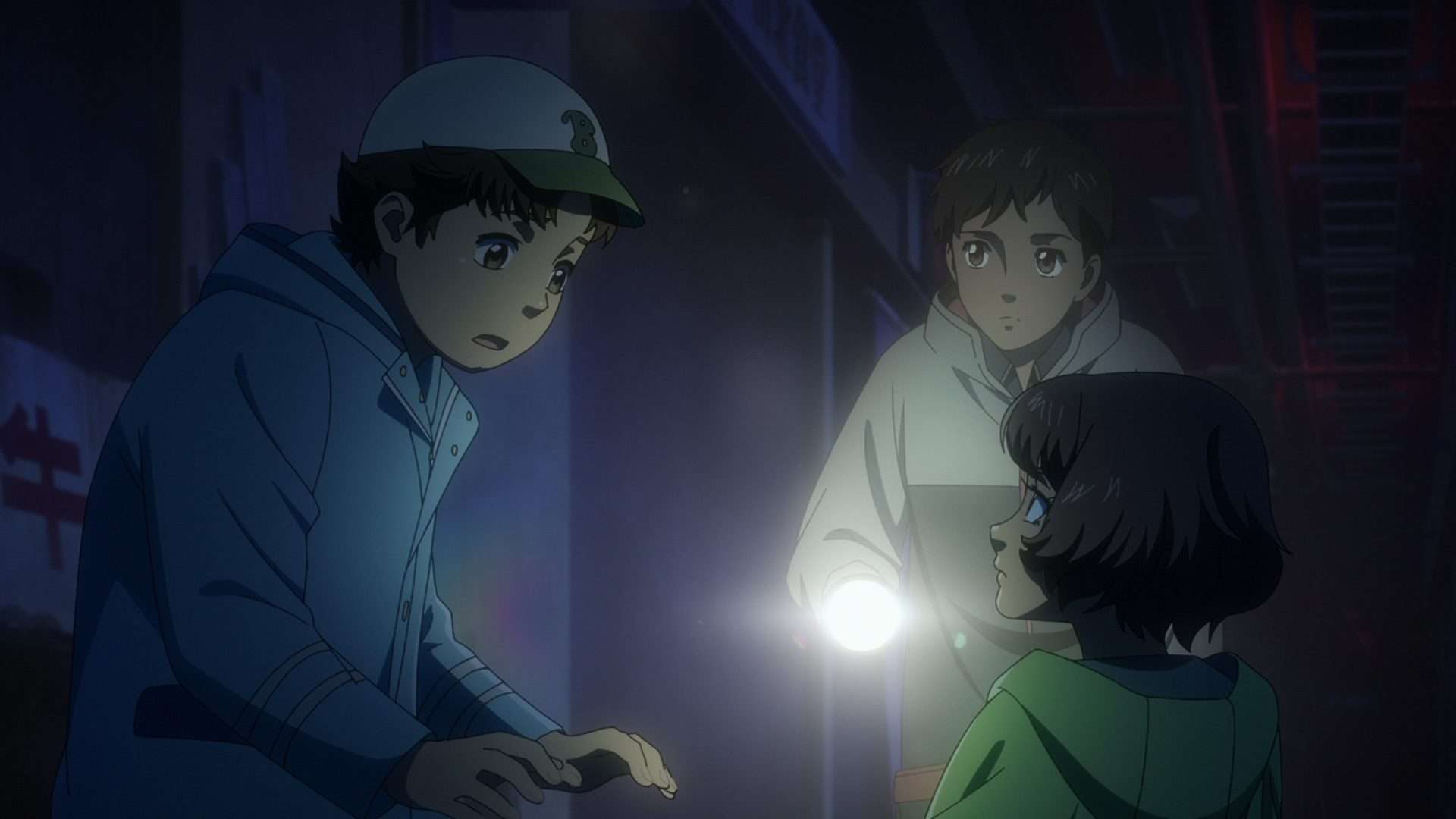
Surprisingly, the “Terminator” franchise follows the same pattern as another legacy sci-fi franchise of the 1980s—”Alien.” In that, the franchise’s first two films are almost untouchable source texts. At the same time, the consequent sequels and spinoffs riff on what worked in the original and their distinctive iconographies—to diminishing results.
In the case of “Terminator,” the presence of time travel, the characters of Sarah and John Connor, and, of course, Arnold Schwarzenegger’s distinctive presence as the T-800, plus what the movie ultimately is—a cautionary tale against the proliferation of technology and artificial intelligence without losing the entertainment value that made “Terminator” work in the first place—make it a compelling watch.
However, the “Terminator” sequels would ultimately lose the plot of what made the first two works in the first place—an action juggernaut working essentially as one long chase film to stop a future that isn’t set in stone yet. Sequels like “Terminator Salvation” would choose to explore dystopia. In contrast, “Terminator Genisys” and “Terminator Dark Fate” would choose the even more dicey story thread of further muddying the timeline by sending Kyle Reese back in time to a timeline where Sarah Connor is already trained by a T-800 sent way before Reese, and the cumulative butterfly effect results in further damage to the timeline.
One thing you cannot take away from “Terminator Zero” is its self-awareness. It is very clearly designed to respond to most of the criticisms afforded to the less appealing sequels while also taking in and remixing elements of almost all the entries within the franchise (yes, even Genisys)—surprisingly, especially Genisys.” The big win for “Terminator: Zero” is squarely pitting the focus on characters unrelated to the Connors.
While Skynet is the prevalent danger because it covers the timeline of both Judgement Day and its immediate aftermath, the dilemmas “Terminator: Zero” chooses to explore are somewhat headier. Rather than a war between humanity and machines, central characters in the present and future are exercising coexistence to stop the war. It is a fascinating choice, informed precisely by the inevitability of AI proliferating our every move and becoming increasingly apparent, rather than the speculative storytelling that James Cameron and Gale Anne Hurd would exercise in the original franchise.
Considering the animation company involved (Production IG), it makes sense that most of the sequences would be characters talking and dealing with a philosophy about fate and relinquishing it. But what is truly hilarious is how overtly it points out all the repetition and sequelizing of the films as “endless wars” that happen elsewhere, mainly pointing out the futility of it all.
The irony, though, is it doesn’t altogether avoid the pitfalls of convolution either in trying to explain the mechanics of time travel or in untangling a knotty family tree. But what is ultimately disappointing is the decrease in action sequences. Don’t get me wrong, when those sequences occur, those are exquisite bloodbaths, and the sequence in the police station is a homage to the original film, while the sequence at the flyover is a homage to “T2.” But this is decidedly its beast, with its own set of convolutions and follies.
Characters like Malcolm Lee are shafted to speak with the AI personification in an ever-evolving spherical room housing the AI Kokoro for multiple episodes. At the same time, the action is limited to the dystopia occurring on the ground. And the show could also feel like hinting at obvious twists, with the grimdark bent not helping matters. But the difference is that instead of the buildup feeling stretching out the obvious, it feels more like a legitimate payoff.
It’s different whether the payoff lands and honestly, there are twists that feel less logical and more in service of its homage to the franchise. The animation, at times, especially in the earlier episodes, feels marginally stiffer, especially regarding the 3D assets being utilized. But the action sequences, when showcased through close-quarters combat or the liberal use of blood and graphic violence, are beautifully staged.
Tomlin’s storytelling and his love of the franchise shine in how it not only tiptoes around the lore of the first two films but also manages to craft a parallel story without disturbing the original’s events. While not as thematically deep as “Ghost in the Shell” or even the recent “Mars Express,” which explores the class divide between robots and humanity—which is barely hinted at here—”Terminator Zero” attempts to examine the aftermath of AI proliferation, with a larger hint at coexistence rather than a proper war to see what comes out at the top. Interesting characters are being written and explored in the show, whose longer runtime can afford even more depth. The ensuing second season will hopefully explore the franchise in more surprising avenues.




